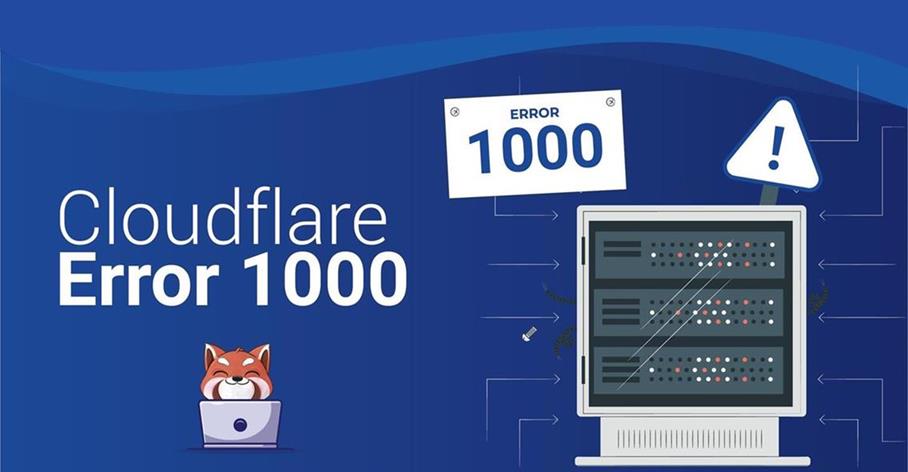How to Fix Cloudflare Error 1000: A Comprehensive Guide
When a website’s DNS (Domain Name System) leads to an IP address that Cloudflare doesn’t allow, Cloudflare Error 1000 happens. This means that Cloudflare can’t act as a proxy for website traffic, so users get the Error 1000 message.
Common Causes of Cloudflare Error 1000
- Wrong DNS Records: A wrong DNS record in the Cloudflare DNS app is one of the most common causes of Error 1000. If the A record goes to a Cloudflare IP address, it needs to be changed to the IP address of the original web server.
- Misconfigured CNAME Record: Error 1000 can also happen if a CNAME record in the Cloudflare DNS app goes to a different domain and that domain does not resolve correctly when a DNS lookup is done.
- Non-Cloudflare Domain with CNAME: If a domain is not on Cloudflare but has a CNAME name that points to a Cloudflare domain, it may cause the Error 1000.
- Reverse Proxy Setup: Error 1000 can happen if the origin site has a reverse proxy that sends the request back through the Cloudflare proxy. In this case, the origin site needs to be set up with an HTTP redirect.
- Length of the X-Forwarded-For header: Error 1000 could happen if the X-Forwarded-For header of the request is longer than 100 characters. This header tells Cloudflare the IP address of the original user and the IP address of the proxy server.
- Duplicate X-Forwarded-For Headers: Another reason is that the request has more than one X-Forwarded-For header. This duplicate information can cause Cloudflare Error 1000.
Step-by-Step Solutions to Fix Cloudflare Error 1000
-
Verify Cloudflare DNS Settings
- Use the Cloudflare DNS app to check the A record that was added to the name. Make sure it points to the IP address of the right origin web server and not an IP address for Cloudflare.
- Make sure that the nameservers for the site only point to Cloudflare. Don’t use foreign nameservers along with Cloudflare’s nameservers, as this could cause problems with DNS resolution.
- Get rid of any DNS records that are entered twice in the DNS control area. If there are more than one A record set for the same address, you should get rid of the extra entries.
-
Streamline Nameservers
Make sure that the nameservers for your site only point to Cloudflare. Don’t use foreign nameservers along with Cloudflare nameservers, as this could cause problems with DNS resolution.
-
Look over the CNAME records
- Use the Cloudflare DNS app to look at all of the CNAME records. Make sure that each CNAME record points to the correct name when you do a DNS lookup.
- Fix any mistakes in the CNAME records to make sure they are pointing to the right sites.
-
Check Reverse Proxy Settings
If your origin server has a reverse proxy that sends requests back through the Cloudflare proxy, you might want to re-configure it with a simple HTTP reroute at the origin server. Error 1000 can be fixed this way.
-
Remove Duplicate DNS Entries
Check the DNS control area carefully and get rid of any DNS records that are entered more than once. If you see more than one A record for the same address, remove the extra ones quickly to reduce the chance of Error 1000.
-
Address Reverse Proxy Setup
If your origin server uses a reverse-proxy setup that sends requests back through the Cloudflare proxy, you might want to replace it with a simple HTTP redirection at the origin server. Error 1000 can be fixed by making this change.
Conclusion
Codeyo Genie is here to help, so don’t forget that. If you need more help or would rather have an expert show you the way, contact us today to improve how your website works and make sure your users can always get to it.
